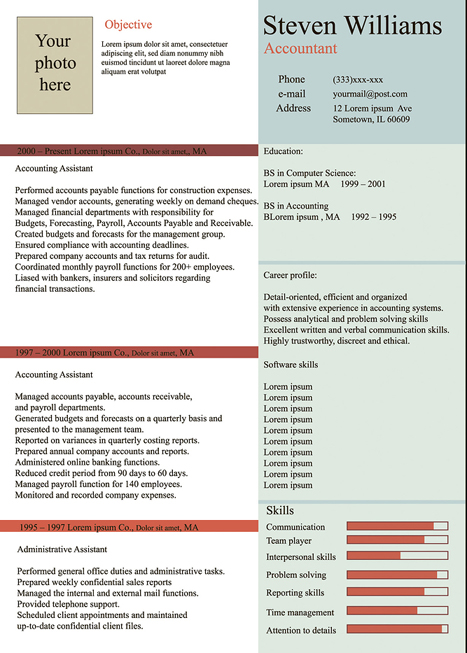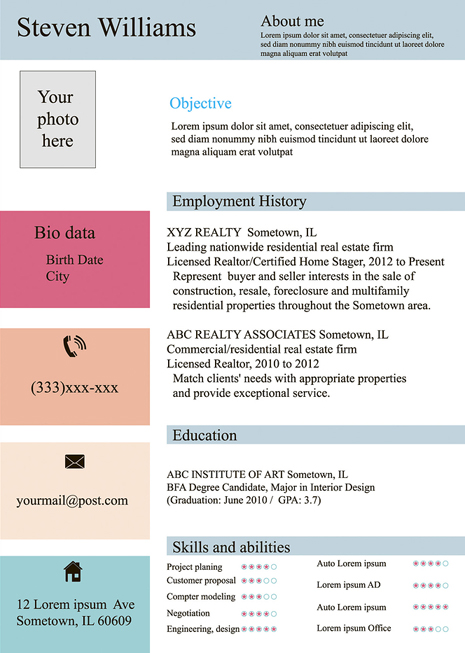Whether you’re a career veteran or an entry-level job seeker it’s essential to get your resume right. Including the right information and getting the formatting right can be confusing.
If you want to find out how to best present you qualifications and job experience read on below.
Select a format
When writing your resume one of the first things you should consider is your choice of formatting.
A good choice of formatting can give you an edge over other applicants as it will push the recruiter towards reading the areas of your professional experience and background that you would like to highlight first.
Different formats are appropriate for different positions, industries and career stages so it’s important to select the right one.
There are three main format options most regularly used by job hunters are:
1. Chronological

Chronological resumes highlight your employment history. Your previously held positions are usually listed from your most recent job through past roles so that recruiters can see your evolution and advancement in your career over time.
This is the most regularly used format and is a good option for those with a consistent or long work history. If you’re just starting out in your career or have large career gaps, there are better formatting choices to be made.
2. Functional

Functional resumes seek to highlight skills and experience ahead of work history. This puts your abilities at the front and centre and is a good choice for job seekers with an inconsistent work history or for those applying for roles requiring specific technical skills.
3. Combination

Combination formats put both work history and skills at the centre of attention and are a good choice for those with a long work history and high level skill.
This resume is typically for job seekers that have achieved a lot in their careers or spent a lot of time at a single company – if you’re looking to show off promotions and awards then this a good format to use.
The issue with this format is that it can be easy for them to become unwieldy and long-winded, so it’s important to keep it concise or risk turning off recruiters.
Include your contact details
One of the first things you should remember to include on your resume is your name and contact details. Your contact information should be included somewhere easily visible at the top of your resume so that it is simple and easy for recruiters to find. It is recommended that you make your name a heading or larger font so that it is apparent straight away who the resume the recruiter is dealing with belongs to.
Generally you will need to include information in this order:
- Name
- Address
- Phone number
- Email address
- Website or online portfolio
- Social media links
If you are sending your resume digitally ensure that your information sets outside of the heading box in Word, some applicant processing software will not read information in this box.
Writing a resume introduction
Resume introductions will typically seek to highlight one or all of the below three things:
Summary of Qualifications
In some situations a summary of qualifications is the most appropriate introduction for a resume. This is an excellent opening for those with a lot of work experience, a diverse set skill set or if the job you are applying for calls for a specific skillset. It’s not a great choice for entry-level job seekers or those with a limited skill pool.
Career Objectives
Highlighting your career objectives is an excellent way to highlight what you’re capable of and is the best way for entry-level applicants or career changers to present themselves. This introductory choice takes the focus off professional experience, and for that reason is not the best choice for roles that call for relevant skills and experience.
Professional Profile
Professional profiles are a combination of both a summary of qualifications and career objective. The aim is to give recruiters more of an idea of the whole picture. This is great if you have an interesting skill set or range of accomplishments and a long work history, but entry level applicants should stick with career objectives.
Professional experience

This is the meat of your resume and the main thing that recruiters are looking at when reviewing your resume so it’s important to give this area of your resume a lot of attention.
This area of your resume should be functional and include a list of your roles from most recent to last. Include the organisation name as a heading with the dates your worked there and your role title. Underneath you should include some bullet points of the highlights of your role, such as key responsibilities or accomplishments. You should also include some information on your daily job tasks and description.
Education
You should list your educational qualifications below your professional experience (or perhaps above if you are a recent graduate). In many roles the relevant degree or educational background is essential.
You should list the name of your institution and qualification in this section, if you achieved any awards or an impressive GPA you should include this too.
Technical Skills
If you are applying for a role that requires specific technical skills then you should include a list of them for recruiters. Many roles such as software development or administration will seek skills such a programming ability or Microsoft office skills.
Soft Skills
Some roles will call for specific soft skills, if you’re an excellent communicator or highly compassionate and it’s relevant to the job that you’re applying for then this is your opportunity to drive this point home.
Not every personality is right for every job, and recruiters are very much looking to recruit great cultural fits for their organisations so including a list of your soft skills might just get you the interview you’re hoping for.
Awards and certifications

If you have achievements or awards that set you apart professionally then by all means ensure they are on your resume. Many recruiters will look for distinguished prospective employees and this is a great way of showing that you’re one of the best in your industry.
Style
There are a few important things to consider when it comes to the overall style and layout of your resume:
Page quantity
Once you have been working a long time it becomes easier and easier to fill up pages and pages. Generally it’s a good idea to stick to no more than 2 pages. One page is ideal for most applicants, most recruiters have a lot of resumes to read through, so the longer your resume is the less likely you’re going to capture the recruiters attention. Short and sweet is key when it comes to scoring an interview with busy recruiters.
Font
There are times when fancy fonts are appropriate, rarely is this the case with resumes. As a rule stick to easily legible, 10 point fonts that are widely used such as times new roman. Even if you’re doing a creative resume for a creative role, it’s important to keep in mind that resumes are more and more regularly run through digital software – using an unusual font might mean that your resume cannot be read by software and it might lead to it being left in the discard pile.
Also, as a rule, stick with black fonts. Colour might be a way to stick out from the crowd but it’s not generally viewed as professional and can hurt your chances with recruiters.

